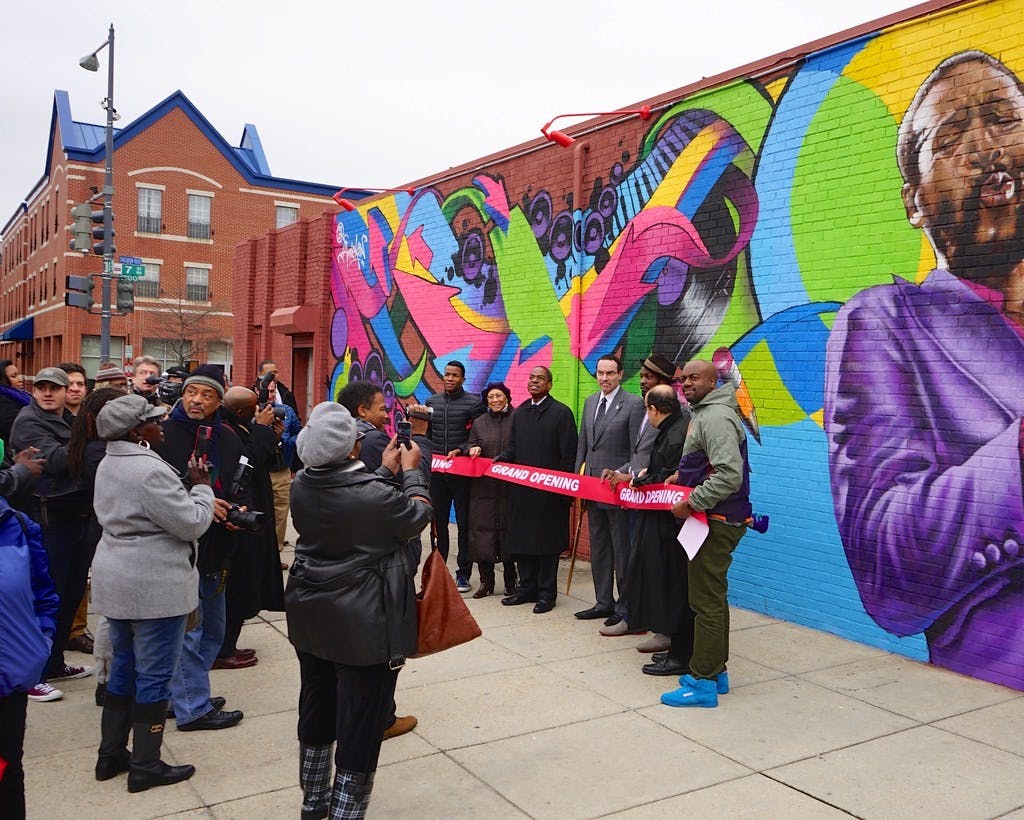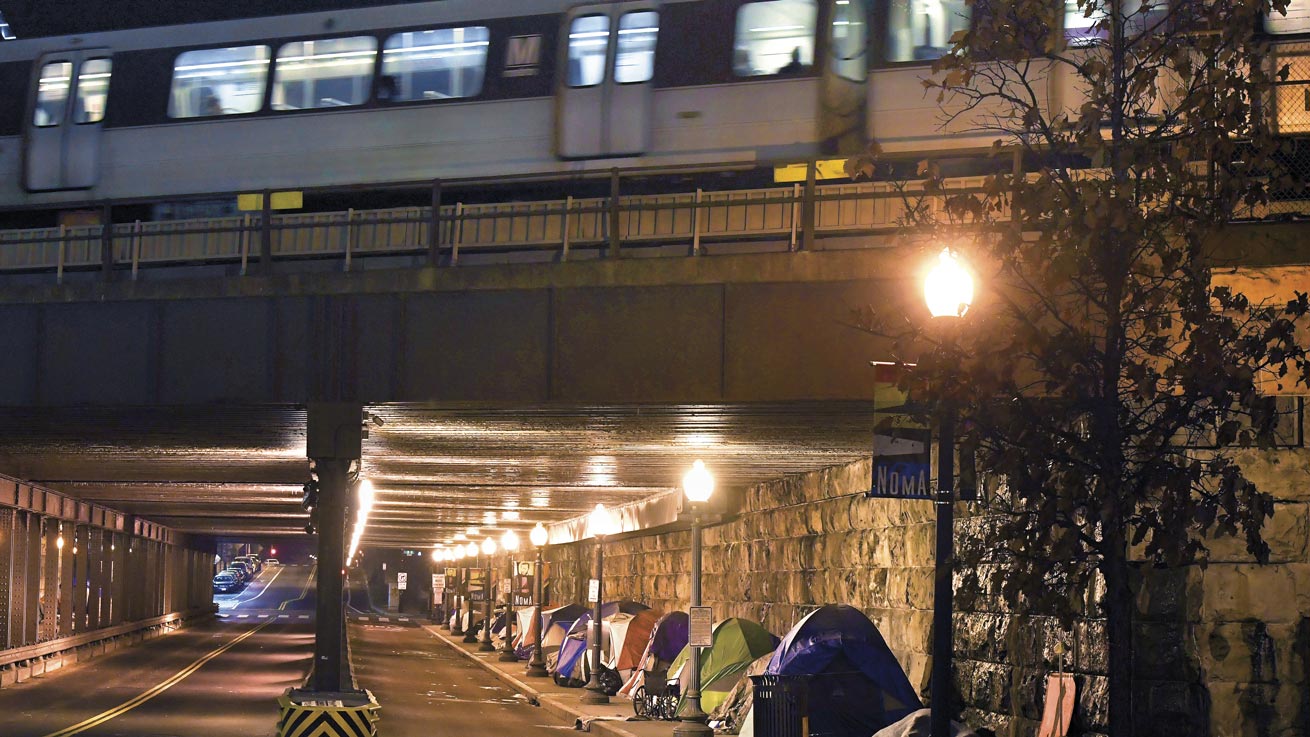Welcome to DU!
The truly grassroots left-of-center political community where regular people, not algorithms, drive the discussions and set the standards.
Join the community:
Create a free account
Support DU (and get rid of ads!):
Become a Star Member
Latest Breaking News
General Discussion
The DU Lounge
All Forums
Issue Forums
Culture Forums
Alliance Forums
Region Forums
Support Forums
Help & Search
Washington, DC Was an Icon of Black Political Power. Then Gentrification. Black Cities Trend, 20 Yrs
Last edited Wed Jun 1, 2022, 09:05 PM - Edit history (2)

- Wash. DC History & Culture celebrates Marvin Gaye’s life & musical accomplishments. Ribbon Cutting of new mural.
__________
- 'Washington Was an Icon of Black Political Power. Then Came Gentrification,' Politico Magazine, April 15, 2022. 'Washington’s story is just one instance of a nationwide trend. -Ed. - A POLITICO analysis found 9 of the 10 American cities with the largest Black populations experienced a decline over the past 2 decades. -
WASHINGTON, D.C. — Dominic Moulden landed in the historic Shaw neighborhood on his very first day in Washington. He can readily recall the exact date: June 1, 1986. On that day, he discovered a city, and a neighborhood, that just felt easy compared with his native Baltimore. This was, after all, the neighborhood that was home to famed, historically Black Howard University — “The Mecca.” It was the neighborhood that nurtured a litany of Black excellence, from Duke Ellington to Langston Hughes to Carter G. Woodson, the “Father of Black History.” To him, it was a neighborhood that felt like home, a neighborhood where everyone felt like family.
Nearly 36 years later, Moulden still remembers what it felt like to be there, taking in the percussive funk of go-go music, the people filtering in and out of chicken joints and barber shops, the young professionals flocking there to party after work, the Black businesses making a comeback after the ’68 riots. Today, when Moulden walks those same city blocks, he feels a deep sense of loss. The neighborhood around him has changed, dramatically so. Statistically, the neighborhood is safer, even though the city’s lately seen an uptick in crime. People’s homes are worth more — once-modest row houses command seven figures these days. Boarded-up storefronts are now trendy boutiques.

- D.C. homeless encampment, Subway Metrocenter.
But it’s not easy. Far fewer of the residents are Black. What was the home of Black Broadway, where luminaries such as Zora Neale Hurston & Cab Calloway once congregated, is now an increasingly generic upscale urban landscape. Its storied history is referenced mostly in tribute: loft apartments named after Black icons, signs pointing out Black history landmarks & splashy murals depicting the neighborhood as it once was. It’s a neighborhood whose identity Moulden is fighting to preserve amid rapid change. He is among the community activists with Organizing Neighborhood Equity, or ONE DC, who for years have resisted attempts by city officials & developers to reshape the community for a new generation. - “If you get a chance to talk with people that grew up in D.C. at that time,” he said, “they will tell you that that D.C. was way better than this D.C. because people spoke to you. Even though the disinvestment was taking place, the serial displacement had not started.” -
Today, he said, the “working-class Black side” is “leading the charge to take back D.C. We mean, we have a right to the city.” For generations, the idea of “taking back” D.C. for Black people might have seemed almost nonsensical. D.C. was nearly half Black by the mid-20th c., & more than 71 % by 1970 — a capital city that was also a national icon of local Black political power. No longer. As D.C. has skyrocketed in population over the past 20 years, buoyed by a renaissance in urban life, it has also seen a sharp outflow of Black residents. Between the 2000 & 2020 U.S. Census, the city’s Black population dropped from 59 to 41 %. Today, D.C. has one of the highest rates of displacement in the country. The city that once proudly dubbed itself “Chocolate City” is no longer majority Black. D.C.'s story is, in a sense, just one instance of a nationwide trend: 9 of the 10 U.S. cities with the largest Black populations experienced a decline in Black residents over the past 2 decades...- Read More, https://www.politico.com/news/magazine/2022/04/15/washington-dc-gentrification-black-political-power-00024515
_________________

- Dominic T. Moulden, community activist, Organizing Neighborhood Equity, or ONE DC. https://democracycollaborative.org/dominic-t-moulden
- 'Washington DC History and Culture celebrates Marvin Gaye’s life and musical accomplishments. Zoom webinar focuses on history of Marvin Gaye’s music career. The Eagle, March 13, 2021.
https://www.theeagleonline.com/article/2021/03/washington-dc-history-and-culture-celebrates-marvin-gayes-life-and-musical-accomplishments
_________

- Carter Godwin Woodson, 'Father of Black History' (Dec. 19, 1875 – April 3, 1950) was an American historian, author, journalist, and the founder of the Association for the Study of African American Life and History. He was one of the first scholars to study the history of the African diaspora, including African-American history. A founder of The Journal of Negro History in 1916, Woodson has been called the "father of black history", In Feb. 1926 he launched the celebration of "Negro History Week", the precursor of Black History Month. Born in Virginia, the son of former slaves, Woodson had to put off schooling while he worked in the coal mines of West Virginia.
He graduated from Berea College, and became a teacher and school administrator. He gained graduate degrees at the University of Chicago and in 1912 was the second African American, after W. E. B. Du Bois, to obtain a PhD degree from Harvard University. Woodson remains the only person whose parents were enslaved in the U.S. to obtain a PhD. He taught at historically black colleges Howard University and West Virginia State University but spent most his career in Washington, DC managing the ASLAAH, public speaking, writing, and publishing...
https://en.wikipedia.org/wiki/Carter_G._Woodson

- Zora Neale Hurston (Jan. 7, 1891– Jan. 28, 1960) was an American author, anthropologist, and filmmaker. She portrayed racial struggles in the early-1900s American South and published research on hoodoo. The most popular of her 4 novels is Their Eyes Were Watching God, published in 1937. She also wrote more than 50 short stories, plays, and essays. Hurston was born in Notasulga, Alabama, and moved with her family to Eatonville, Florida, in 1894. She later used Eatonville as the setting for many of her stories. In her early career, Hurston conducted anthropological and ethnographic research while a student at Barnard College and Columbia University. She had an interest in African-American and Caribbean folklore, and how these contributed to the community's identity...,
https://en.wikipedia.org/wiki/Zora_Neale_Hurston
InfoView thread info, including edit history
TrashPut this thread in your Trash Can (My DU » Trash Can)
BookmarkAdd this thread to your Bookmarks (My DU » Bookmarks)
2 replies, 981 views
ShareGet links to this post and/or share on social media
AlertAlert this post for a rule violation
PowersThere are no powers you can use on this post
EditCannot edit other people's posts
ReplyReply to this post
EditCannot edit other people's posts
Rec (5)
ReplyReply to this post
2 replies
 = new reply since forum marked as read
Highlight:
NoneDon't highlight anything
5 newestHighlight 5 most recent replies
= new reply since forum marked as read
Highlight:
NoneDon't highlight anything
5 newestHighlight 5 most recent replies
Washington, DC Was an Icon of Black Political Power. Then Gentrification. Black Cities Trend, 20 Yrs (Original Post)
appalachiablue
Jun 2022
OP
Cheezoholic
(2,016 posts)1. Thanx
appalachiablue
(41,127 posts)2. YW. Wash DC, what a great city.